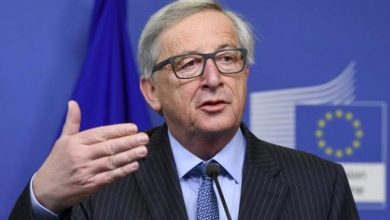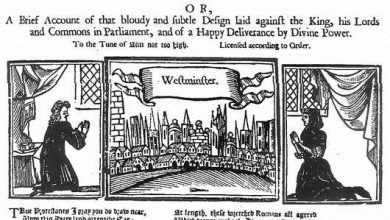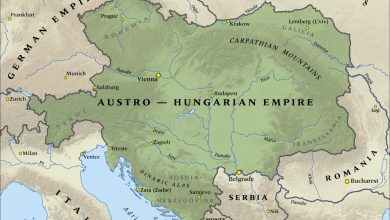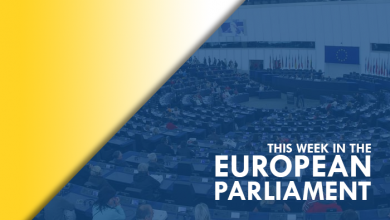How the European Coal and Steel Community Came to Be

To us, today, the close cooperation between Italy, France, the Benelux countries, and Germany, which would eventually lead to the European Union, might seem like a given, an absolute. But things weren’t always like that, and I aim to show that in this post, and that we should always be grateful for how well we are able to cooperate. The birth of the European Coal and Steel Community is particularly instrumental for this.
Sure, the Nazi Government was no more, but let us not forget that Germany, and before her unification, Prussia, proved to be an almost constant thorn in France’s side. And we must also not forget France herself. Since she emerged from the Hundred Years’ War, centralized, united, and stronger than before, she spent centuries dedicating much of her power to keep northern Italy and the Germanies divided, weak and ripe for conquest.

She was opposed in this endeavour by the Habsburgs in Austria, but the emergence of Prussia as a major player on the political stage, completely switched the balance of power in Europe. Prussia was viewed as dangerous, so dangerous in fact, that France and Austria decided to abandon centuries of rivalry and hate, and instead join forces.
However, the allies made the same mistake as many more had done before, and would do after them. Rather than linking their forces and hunting Frederick the Great wherever he appeared until a battle could be forced, France and Austria remained separate, each pursuing separate political goals rather than pursuing the destruction of the Prussian army. This allowed Frederick the Great to crush each separately, first the French at the Battle of Rossbach, then the Austrians at the Battle of Leuthen.
But let us return to the 1950s, and the emergence of the European Coal and Steel Community. We must give credit where credit is due, so let us acknowledge NATO and the Marshall Plan that both became implemented at the end of the 1940s, after the Second World War. The Marshall Plan and NATO gave the involved countries new experience in working with each other and demonstrated the productivity, efficiency, and simple possibility of cooperative action. In 1950 France, West Germany, Italy, and the Benelux countries organized the European Coal and Steel Community. Its success reduced the suspicions of government and business groups about the concept of coordination and economic integration.
Interestingly, one of the reasons for creating the European Coal and Steel Community was to prevent Germany from becoming a military threat towards France. According to “The Theory and Reality of the European Coal and Steel Community” (2007), by Karen J. Alter and David Steinberg, “The Schuman Plan (a declaration made by the French foreign minister, Robert Schuman) was designed to alleviate concerns that Germany’s dominance in coal and steel could be used to harm European reconstruction efforts or to build another war machine.”
They go further, stating that “Germany’s European neighbours were concerned that Germany might regain its dominance in steel, and that they (the neighbours) would lack the steel they needed to rebuild their economies. While the Allies were occupying Germany, the International Ruhr Authority monitored and controlled Germany’s industry. But by 1949 it was clear that the United States planned to create a sovereign Germany largely free of international oversight and control. Schuman proposed the Coal and Steel Community to avoid German sovereign control of its industry”.
So we see that France decided to take a different path from before. After the First World War, France repeatedly invaded, or threatened to invade, and occupied the Ruhr area, to force Germany to fold to French demands, and to keep them lenient. This time, France seemed to decide that linking themselves closer to Germany was the best way to go.
But the European Coal and Steel Community was not enough, even though it proved to be largely successful. It took more to draw European leaders towards unity. The unsuccessful Suez intervention and the resulting diplomatic isolation of France and Great Britain persuaded many Europeans that only through unified actions could they significantly influence the two superpowers or control their own destinies. Consequently, in 1957, through the Treaty of Rome, the six members of the ECSC agreed to form a new organization: the European Economic Community.
But let us look at how the other countries reacted to the Schuman Plan, which was officially adopted by the French Government late in the morning of May 9 1950. In Germany, there was a rather large initial shock. As has been stated, this proposal was a complete reversal of French policies towards their German neighbours. The proposal that Germany should be offered equal treatment could not fail to be welcomed since it satisfied a long-standing German demand and made possible the irreversible integration of the Federal Republic of Germany into Western Europe.
But there were exceptions of course, in particular the Social Democratic Party (SPD). The SPD dreamt of a unified Germany, and the Schuman Plan seemed to steer away from that, focusing instead of integrating Western Germany with the rest of the West, while further alienating Eastern Germany, under Soviet control.
The SPD’s pacifist and anti-capitalist orientation made it all the more mistrustful of the Schuman Plan since the Plan did not include the nationalisation of heavy industry in the Ruhr basin, a measure for which the Social Democrats had been calling for some time. German public opinion, although aware of the Plan’s symbolic value, was for the most part undecided and even, at times, hostile and ill-informed.

Alcide De Gasperi, Italy’s prime minister, embraced the proposal not only because he was a fervent Eurofederalist but also because it might help to strengthen his government’s position vis-a-vis the strong Communist opposition.
Federiga M. Bindi, in her recently released book “Italy and the European Union” (published 2011) states that “For Italy, this (the Schuman Declaration) was an important political and economic opportunity. It would help the difficult reconstruction of the country’s democratic and economic systems. Furthermore, De Gasperi – aware that the Eastern markest were closed to Italy – chose to pit the Italian economy against the most competitive and difficult markets: the Atlantic and Western European ones.”
However, there was opposition. She goes on, “The Italian Ambassador in Paris, Pietro Quaroni, opposed the proposal, convinced that the plan would favor French interests alone, thus threatening the Italian coal and steel industry. Also, he did not believe Schuman would be fully engaged in defending Italian industry.”
There are a few final things we have to discuss before wrapping this up, firstly: the Nazis still remaining in West Germany. Der Spiegel uncovered intelligence files of the BND, Germany’s intelligence service. The documents reveal that in 1949, some 2000 former officers of the SS and the Wehrmacht formed a secret paramilitary army that might have numbered as many as 40 000 fighters in the event of war.
The Allied occupation forces didn’t know about it. If they did, they would have discovered the involvement of several former Nazi generals who would later become senior commanders in the Bundeswehr, West Germany’s army.
The underground army was apparently supported by former Third Reich generals such as Hans Speidel, who became chief of NATO ground forces in Central Europe in 1957, and Adolf Heusinger, the first inspector general of the Bundeswehr.
Thus after losing millions of men to defeat Hitler, the Western Allies might have had to deal with an army of German war veterans backed by former Nazi senior officers who were rising stars in the West German military.
These ties with former Nazi members did not end there. The Israeli trial against Adolf Eichmann in 1961 was unofficially influenced by West German agents. The reason was to keep the trial on Eichmann, and not expand the trial to include war criminals still in service in West Germany, such as Hans Globke, one of the most important officials in the Adenauer government.
Israel issued an arrest warrant for Eichmann in May 1960, the trial began in April 1961, the Jerusalem court announced its guilty verdict in December 1961, and in May 1962 the Israeli Supreme Court approved the death sentence. In those 24 months, the Berlin Wall was built, CIA troops landed in Cuba and attempted to overthrow Fidel Castro, and the Soviets were on the verge of stationing nuclear warheads on the Caribbean island. The public had every reason to fear that the Cold War could become hot at any time. But which allies would still be willing to defend (West) Berlin, Bonn wondered, if the Eichmann trial created the impression that West Germany was a refuge for incorrigible former Nazis?
And despite the success of the Coal and Steel Community and the subsequent EEC, Germany continued to be a hot potato for the rest of Europe, up to the German unification. Giulio Andreotti, Italian prime minister 1989 – 1992, is quoted as having said that “I love Germany so much that I prefer to see two of them.”, and Margaret Thatcher, British prime minister, said as late as December 1989 that “We defeated the Germans twice! And now they’re back!”, urging France to stand with Great Britain against German unification.
Italy also had troubles in post-war Europe, exemplified by Palmiro Togliatti. Post-war Italy presents in many ways a unique political constellation in post-war Western Europe: like West Germany, it was post-authoritarian, under heavy American influence, a ‘front state’ in the Cold War that by many accounts merely possessed ‘limited sovereignty’; but unlike the Federal Republic of Germany, Italy exhibited a highly unstable, some might say dysfunctional, form of parliamentary politics, with rapidly changing governments, as well as widespread corruption and clientelism – which nonetheless co-existed with an unrivaled form of continuity: nowhere else was one party – namely the Italian Christian Democrats -always in power.
Another thing that stands out in post-war Italy is that arguably nowhere else did Communism flourish for such a long time both as a party and as a form of political theorizing that had gained significant distance from Moscow, but not necessarily broken with Leninism or, generally, an insurrectionary approach to politics.
In 1944 Togliatti returned to Italy, and led his PCI and other political forces to the so-called “svolta di Salerno”, the “Salerno Turn”. This was a compromise between antifascist parties, the monarchy and prime minister Pietro Badoglio to set up a government of national unity and to postpone institutional questions. The PCI committed to supporting democracy and to abandon the armed struggle for the cause of Socialism. In effect, the turn moved the party to the right, in contrast with many demands from within.

He served in the provisional governments, as vice prime minister and then minister without portfolio. He campaigned hard for the abolition of the Monarchy in the referendum of 1947, and the constitution thereby drafted was essentially a compromise between DC (Christian Democrat party) and communists. So in 1948, the republic had its first elections. They were highly controversial, with the Americans treating Togliatti as a foreign agent, an enemy of the West, etc etc – probably with some good reason, if you ask me. The combined left coalition got 31%. Three months later he was exiting the parliament and he got shot three times at close distance. The assaulter was a young law student, known to be a fervent anticommunist, Antonio Pallante. He was immediately arrested without resisting.
A mere few hours after the shots were fired, violent demonstrations broke out everywhere. Both in major cities and in quiet backwaters. There were deaths in many cities, Taranto included. The workers of FIAT in Turin sieged the administrator in his own office and locked him inside. Public telephones stopped working, trains stopped running. The ministry of the interior rendered protesting illegal for the duration of the crisis and deployed the police. The American armed forces were also standing by. Ironically, fake news spread everywhere among the left wingers, with people believing Togliatti was dead, that he had been shot by Fascists just like Matteotti in 1924.
It was turning into Greece, quickly. On day two there were more protests, and clashes with the police. More dead people, and hundreds wounded, but the doctors had managed to save Togliatti’s life, so he contacted his two closest collaborators in the party – Secchia and Longo – and told them, categorically, to make everyone calm down and stand down.”
Despite all these problems in the future ECSC members, France included, they managed to put aside their distrust and historical animosity long enough to combine their resources, making them less dependant on foreign supplies, and more able to rise up from the ashes left behind after the Second World War. A valuable lesson, and one we should pay close attention to. The success achieved by the European Coal and Steel Community paved the way for the European Economic Community, and later, the European Union.






An outstanding share! I’ve just forwarded this onto a co-worker who was doing a little homework on this. And he actually bought me lunch due to the fact that I found it for him… lol. So allow me to reword this…. Thank YOU for the meal!! But yeah, thanks for spending the time to talk about this topic here on your web page.
Great post. Thank you for your time in helping me get educated on the matter.